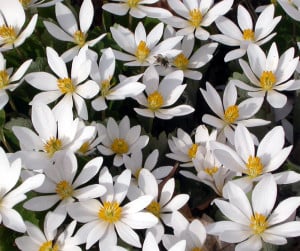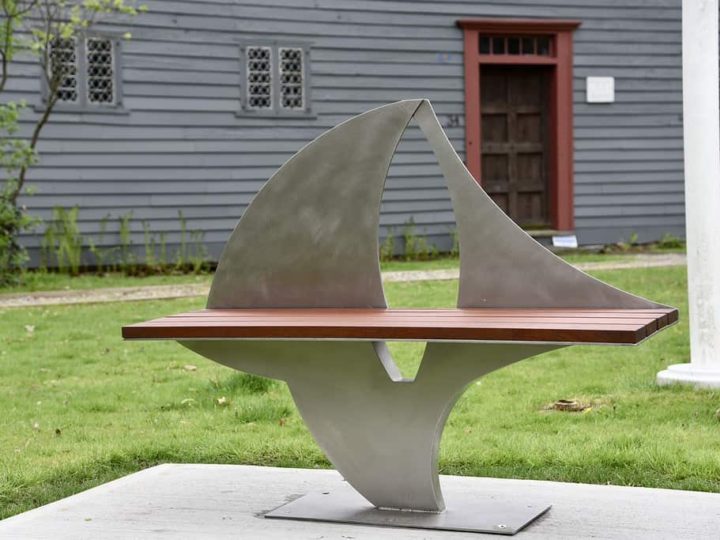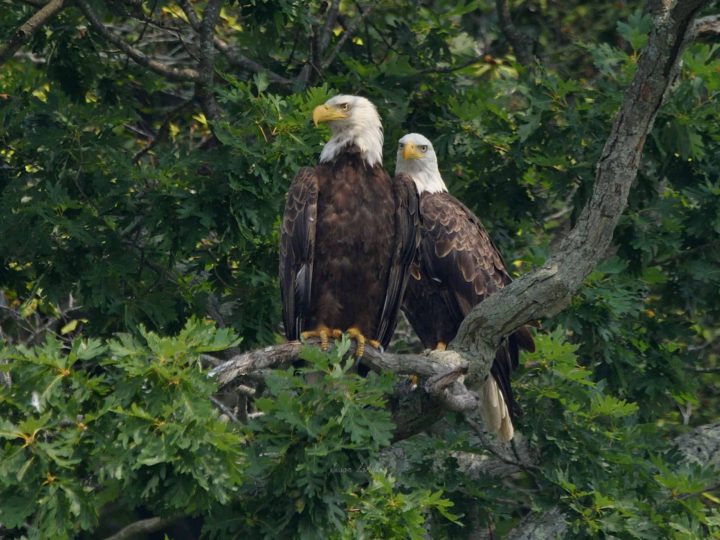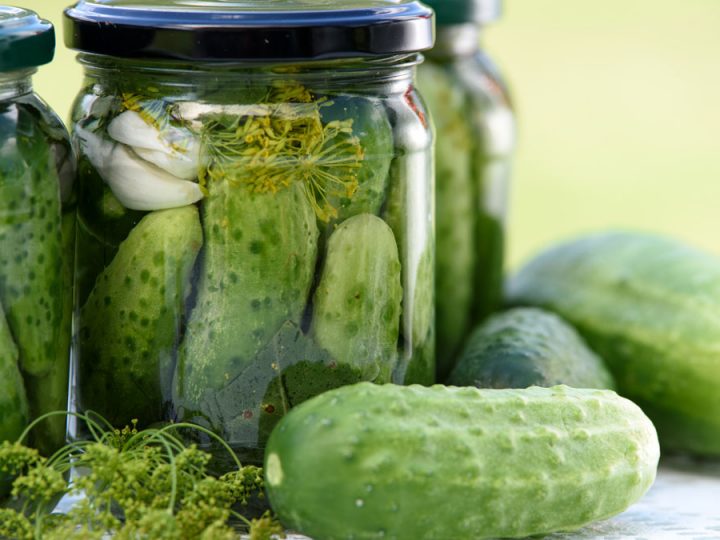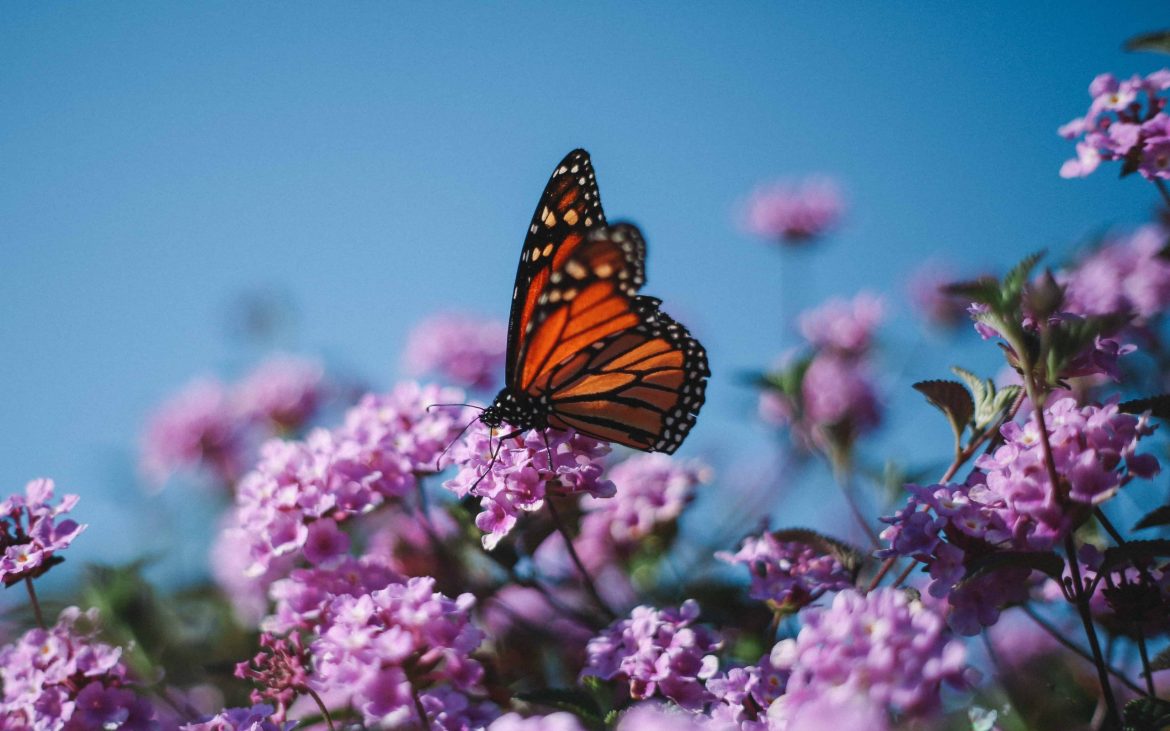
Gardening with Native Plants
Native plants and insects have co-evolved over many years, each working to ensure the other’s survival. Some insects have become the sole pollinators for certain species of plants, and some plants provide the specific host food for the larval stages of insects. 90% of native insects have developed specialized relationships with native plants and have adapted to our soils and climate.
If the focus of your garden is on attracting winged visitors, removing a portion of non-native species and adding selected natives is a wonderful way to start. Research the native plants that are used as host food for their caterpillars, and plant those.
The vibrantly beautiful Monarch butterfly, whose host-specific caterpillar relies on milkweed as its sole food source, is a prime example. Two non-native perennial vines from Europe, black swallow-wort (Vincetoxicum louiseae) and pale swallow-wort (Vincetoxicum rossicum), grow very aggressively, choking out all plants, including milkweed, and is on the Connecticut Invasive Plant List. Although related to milkweed, swallow-worts are toxic to livestock, deer, and Monarch butterfly larvae. Female Monarch butterflies can mistakenly lay their eggs on the toxic leaves, resulting in 0% egg hatch.
Native plants, deciduous plants, flowering trees, shrubs, and vines provide food and shelter for insects and birds by providing nectar, pollen, larval host leaves, fruit, seeds, and nuts. The soft greens of jack-in-the-pulpit (Arisaema triphyllum) and the unfurling of the cinnamon fern (Osmundastrum cinnamomeum) call the Earth to life. The other-worldly eruption of the mayapples (Podophyllum peltatum) is a sight to behold, as it’s umbrella-like leaves spread open and colonize deciduous woodland areas. Other ephemerals like bloodroot (Sanguinaria canadensis), trout lily, (Erythronium americanum), and fringed bleeding heart (Dicentra eximia) gently unfold and supply our native bees with life-giving nectar and pollen.
As the leafy clumps of columbine (Aquilegia) enlarge and send up their glorious flower stalks, bluestar (Amsonia), camas (Camassia), blue false indigo (Baptisia australis), and golden alexander (Zizia aurea) join in. Unlike the introduced plants, each native plant has native bee species that have become specialists in their pollination. The spring blooming trees are abuzz with many species of bees, parasitizing wasps, butterflies, and moths. These include the lovely flowering dogwood (Cornus florida), the amazing (the blooms come out of the bark!) eastern redbud (Cercis canadensis), the reliable serviceberry (Amelanchier), our Connecticut state flower, the mountain laurel (Kalmia latifolia), fragrant cherries (Prunus), furry willows (Salix), and the drooping catkins of birches (Betula).
Dozens of native flowers bring a dazzling succession of colors and life the garden in summer. Bee balm (Monarda) brings bees, butterflies, and hummingbirds. Blazing star (Liatris spicata) and purple coneflower (Echinacea purpurea) attract many bees and butterflies, and in late fall to winter, goldfinches. Native trumpet honeysuckle (Lonicera sempervirens) draws countless hummingbirds, bumbles, and honeybees. Sweet-smelling garden phlox (Phlox paniculata) has all types of butterflies coming. Summersweet (Clethra alnifolia) and sweetspire (Itea virginica) fill the air with their sweet scent. The towering splendor of New York ironweed (Vernonia noveboracensis), Joe Pye weed (Eutrochium), boneset (Eupatorium) and the pollinator magnet, mountain mint (Pycnanthemum virginianum), are all beautiful and perfect for a sunny open space.
Glowing goldenrods (Solidago) are excellent sources of pollen and nectar for migrating and overwintering insects and birds. Members of the aster family (Symphyotrichum) and the sunflower family (Helianthus) provide abundant food as well. Hollow stems make an ideal place for many of our tiny wasps and moths to overwinter, so, if possible, bend stems over and don’t cut them until mid-late spring. Leaving the leaves as a nourishing mulch around woodland plants will reenergize the soil with nutrients, and some species of butterflies and moths will overwinter in the litter.
Native plants are easy to find at area nurseries. Be mindful that some sources use a systemic pesticide to prevent insect damage, and it does not discriminate. Basic “species” plants are best, as many cultivars and hybrids have been developed for increased petals or color pattern, but have little or no valuable pollen and nectar. Not all non-natives are barren or invasive, but with so many glorious native choices, you can make the decision to maintain the balance in the piece of paradise where you live.
To learn more about native plants to use in your garden, stop by the Milford Garden Club’s May Market at the Rotary Club Pavilion behind the Milford Library on May 10th.

